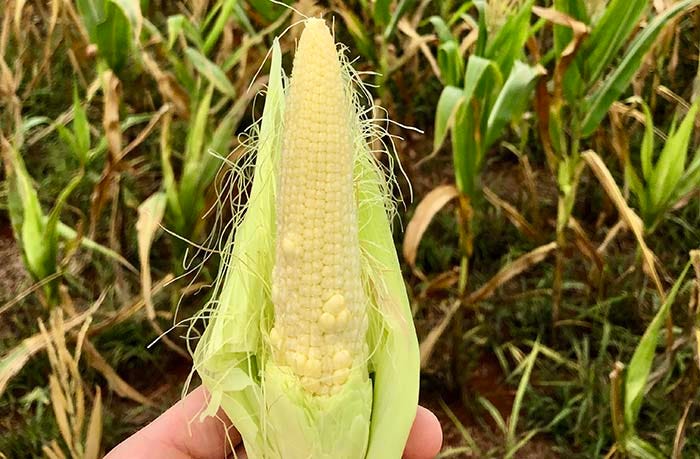
As the world worries about food shortages, the news from Brazil is not good. Drought stress and heat waves have resulted in heavy crop losses in the Southern region and part of the Brazilian Midwest.
According to a survey done by the Technical Assistance and Rural Extension Company of Rio Grande do Sul (Emater/RS), more than 195,000 farms have accounted for crop production losses. The damage already exceeds $9.2 billion.
The main region affected is the South of Brazil, with the states of Rio Grande do Sul, Santa Catarina, and Paraná. In the state of Paraná, the damage is around $4.6 billion, while Santa Catarina has already lost the equivalent of $300 million.
For the 2021/2022 season, the estimated soybean production is 4.5 billion bushels (122.4 million tons), some 11.4% less compared to last year. The major cause of the losses is the low rainfall level since November 2021, with insufficient volumes, damaging soybean and corn plantings. In addition to soybean and corn damage, there are also reports of losses in other sectors, such as beef and dairy cattle, and horticultural products.
Production surge ahead
On the other hand, the overall grain production in Brazil may reach 9.9 billion bushels in the 2021/2022 season. That would be 5.4% higher than last year, corresponding to an increase of 507.1 million bushels. A survey by National Supply Company (CONAB) estimated that the total Brazilian cultivated area was 72.9 million hectares, which represents an increase of 4.4% compared to the 2020/2021 cropping season. The largest area increments were with soybeans, with 4.1% (nearly 4 million acres), and corn, with 6.5% (3.2 million acres) in degraded pasture areas.
That means lower yields in the Southern growing areas may be mitigated by the 4.1% increase in cultivated area, reaching 100 million acres in the 2021/2022. In addition, most of the other states, such as Piauí and Goiás, have recorded higher yields than last year.
In the case of some other crops, such as cotton, weather conditions have favored production. Combined with an increase in acres planted, it is expected to result in a production of 2.83 million tons of cotton plume, 20% higher than the previous harvest.
Safrinha drought impacts
According to the Mato Grosso Association of Soybean and Corn Farmers (Aprosoja/MT), the second-crop corn (safrinha) in Mato Grosso will have irreversible grain losses of approximately 157 million bushels (4 million tons) in 2021/2022. This is due to the severe drought that has already affected more than 10% of the corn production in the state.

The estimated annual corn production will be approximately 1.4 billion bushels (36 million tons) of corn, which is below the expected volume due to lower rainfall. Some fields are up to 50 days without significant rainfall.
The drier period is also affecting second-crop corn in the state of Minas Gerais. After a rainy summer, some regions of the state have been facing drought for approximately 45 days now.
The opinions of the author are not necessarily those of Farm Futures or Farm Progress.
Read more about:
BrazilAbout the Author(s)
You May Also Like






